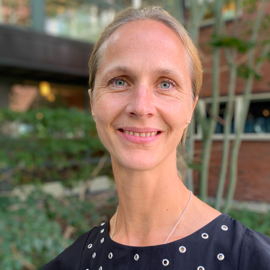A JML beginner’s reflections

Gender equality at work is not just about the proportion of women and men or fair wages. It is also about what is deeply rooted in the organisation - the culture. Ulrika Georgsson, Communications Officer at ITM and new to the JML group, reflects in her chronicle on gender equality and diversity.
It's time for a workshop with the JML group and I read a bit about gender equality at my dear employer and astonish. "Only about 25% of the students and 20% of the faculty members at ITM are women," Sofia Ritzén says 2018. Can it be true? My impression of KTH is to be fairly equal and in my job with communications, I meet a lot of successful women. I realize that there is a lot to dig into to better understand.
I look for facts and note:
- 18% of the Professors at KTH are women, 82% are men
- 1 out of 7 Heads of Departments is a woman
- 30% of the Unit Heads and Center Directors in the faculty are women
- In the administration, over 80% are women and 17% men, and the proportion of male Managers is only 9%.
- 33% of the ITM School's new students to the Master of Science in Engineering programmes this autumn are women.
Of course, these figures say something about how much resources and influence women and men get. However, how do you get the girls to KTH? On the roll call in August, I was pleased to see many young girls who were there to study energy and sustainability, but in the line for future mechanical engineers, they were easy to count.
Inequalities do not automatically have to be a problem, but I believe it is special to be of minority. We have, for example, a large ethnic mix at KTH, on departments such as Materials Science and Engineering, where many of our colleagues are from a different continent. What are the conditions for minorities then? Just as it is special being the only white man on a street of Cairo, it can be special to be the only woman in the room or the only dark-skinned person or the only person under the age of 50. We cannot escape it.
It is time for the JML group meeting.
"A problem for female professors is that they have to be part of so many committees," says one participant. “Often the committees have a goal of a 50/50 distribution between the sexes, but that is not the distribution among the professors. The result is that the women have to spend a lot of time in these meetings, which of course can affect their main work. ”
It is a bit like this with JML matters. Some are obvious, but many are diffuse and usually consist of a number of fragmentary observations that are difficult to measure and point out. Sometimes it is about structures and sometimes about what is deeply rooted in the organisation - the culture. The culture that characterizes coffee rooms, meetings and conversations between colleagues.

I remember once when my communications colleague (female) returned from a meeting and in a dull voice said: “I don’t understand what happened. I was invited to a meeting with a group of researchers. But at the round when everyone got to say a few words about themselves and their work, they skipped me. And I said nothing. I was just completely stunned and felt stupid. ”
Another woman who had just received her professorship said a few years ago: “Finally! It's unbelievable how long it has taken me to get this appointment. It feels like I have been much more inspected and had to work much harder than my male colleagues do. ” The professor's words have followed me and I cannot really get rid of them.
I don’t know what it looks like at all departments of the ITM School, but I know that I will do my best not to be trapped in prejudice. Step one was to join the JML group that just started, to learn more and contribute with hands-on solutions.
Step two was to show ITM's web editors how to avoid prejudices and clichés in pictures.
Now I think about whether I can get the girls to change roles with the caretaker boys at the next photo shoot of the service center.
Text: Ulrika Georgsson
